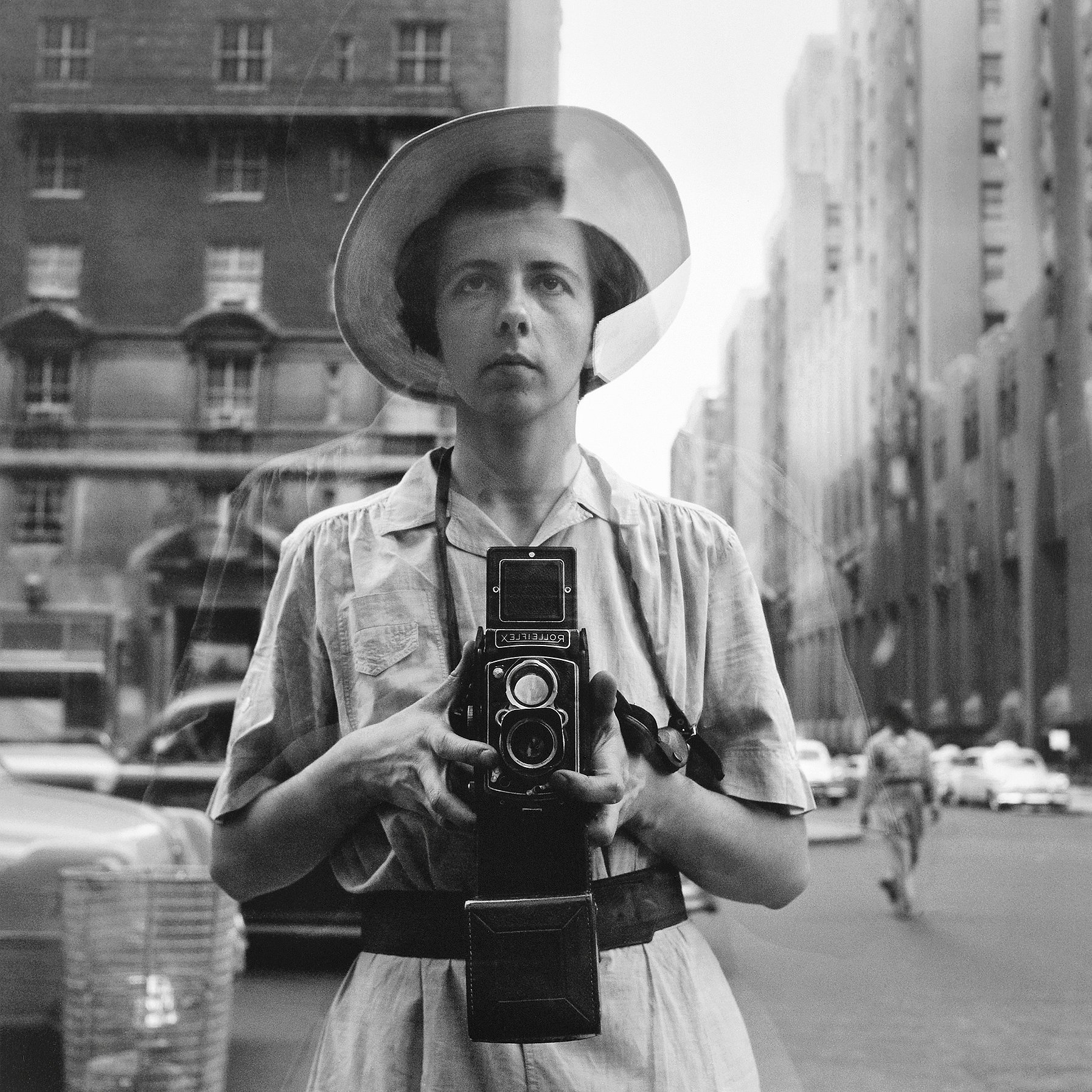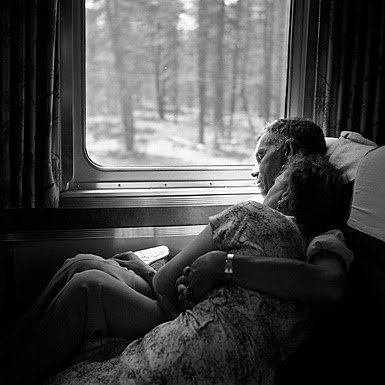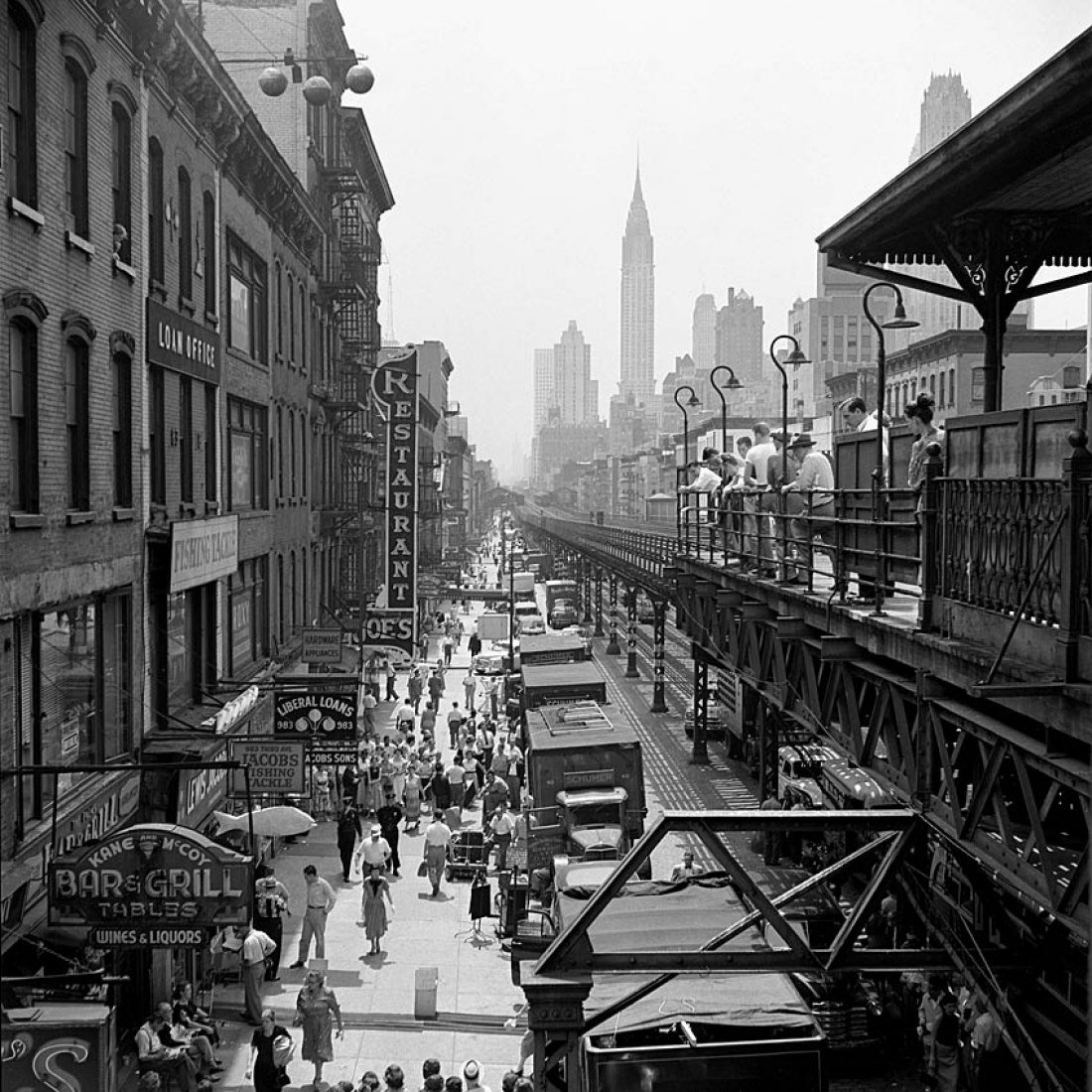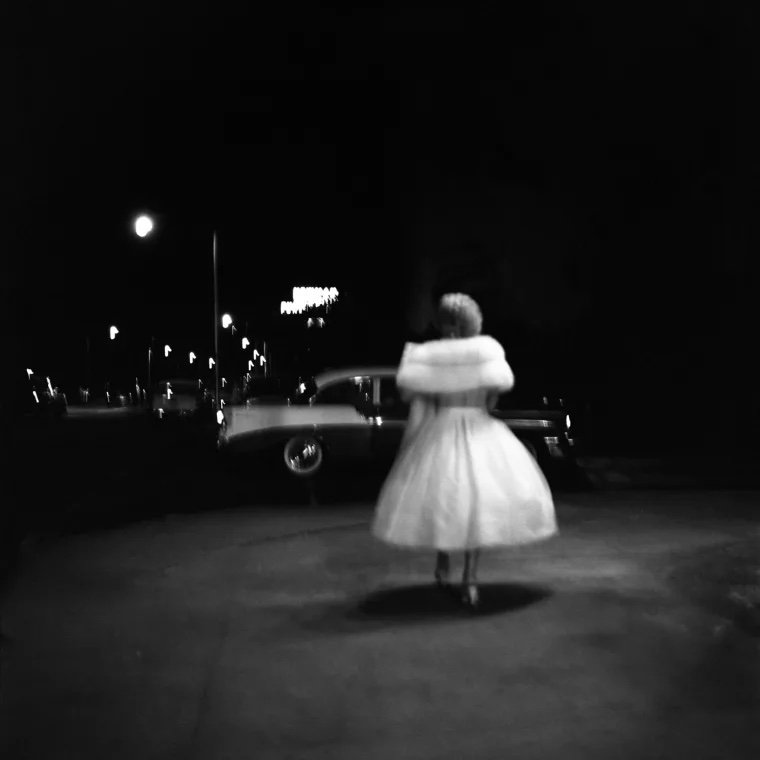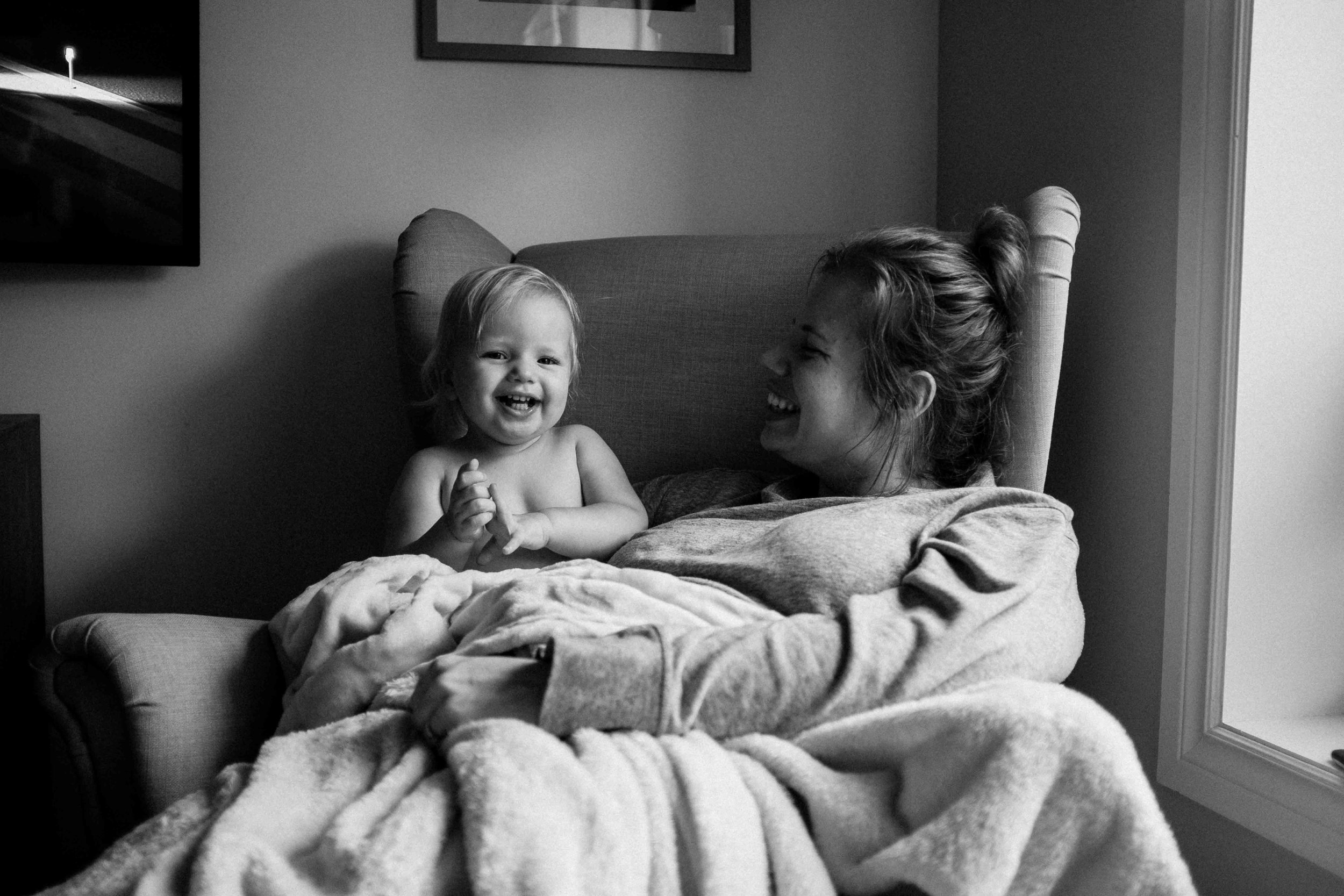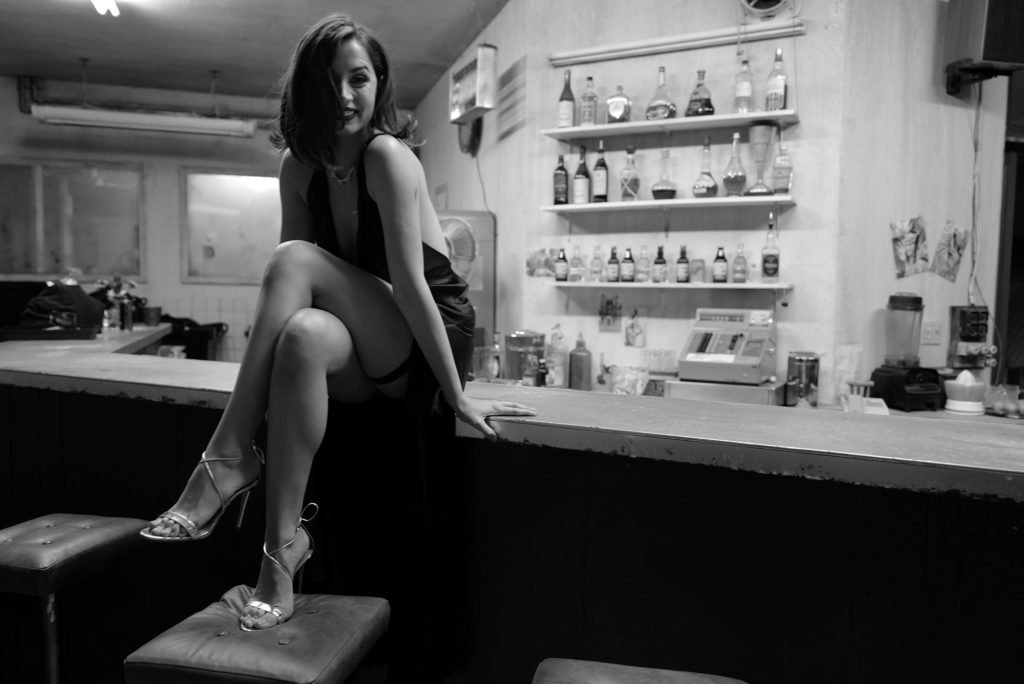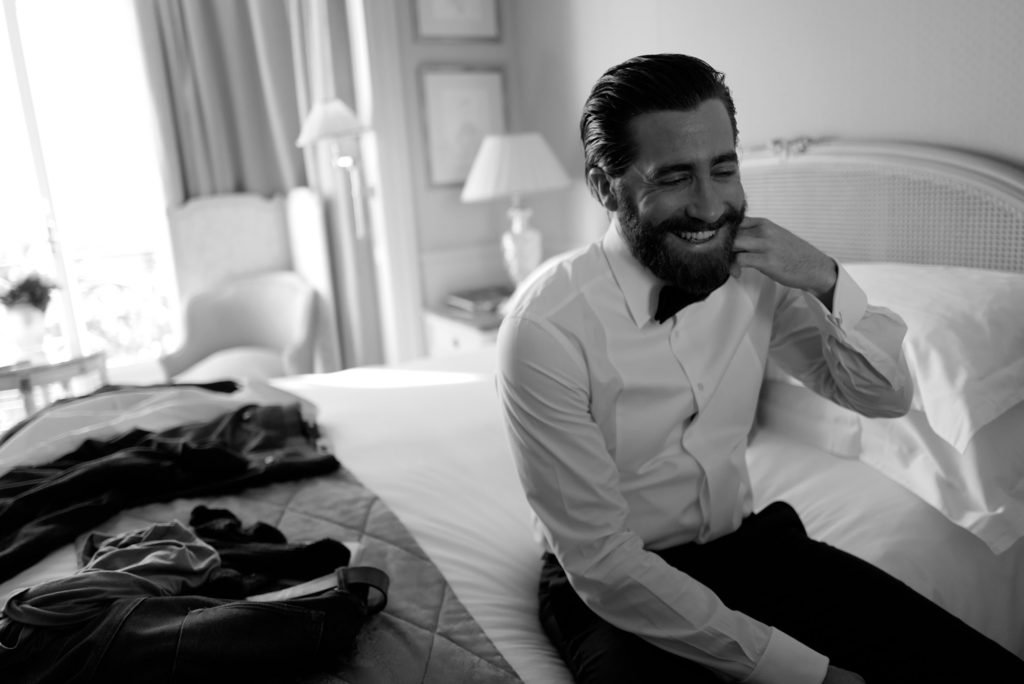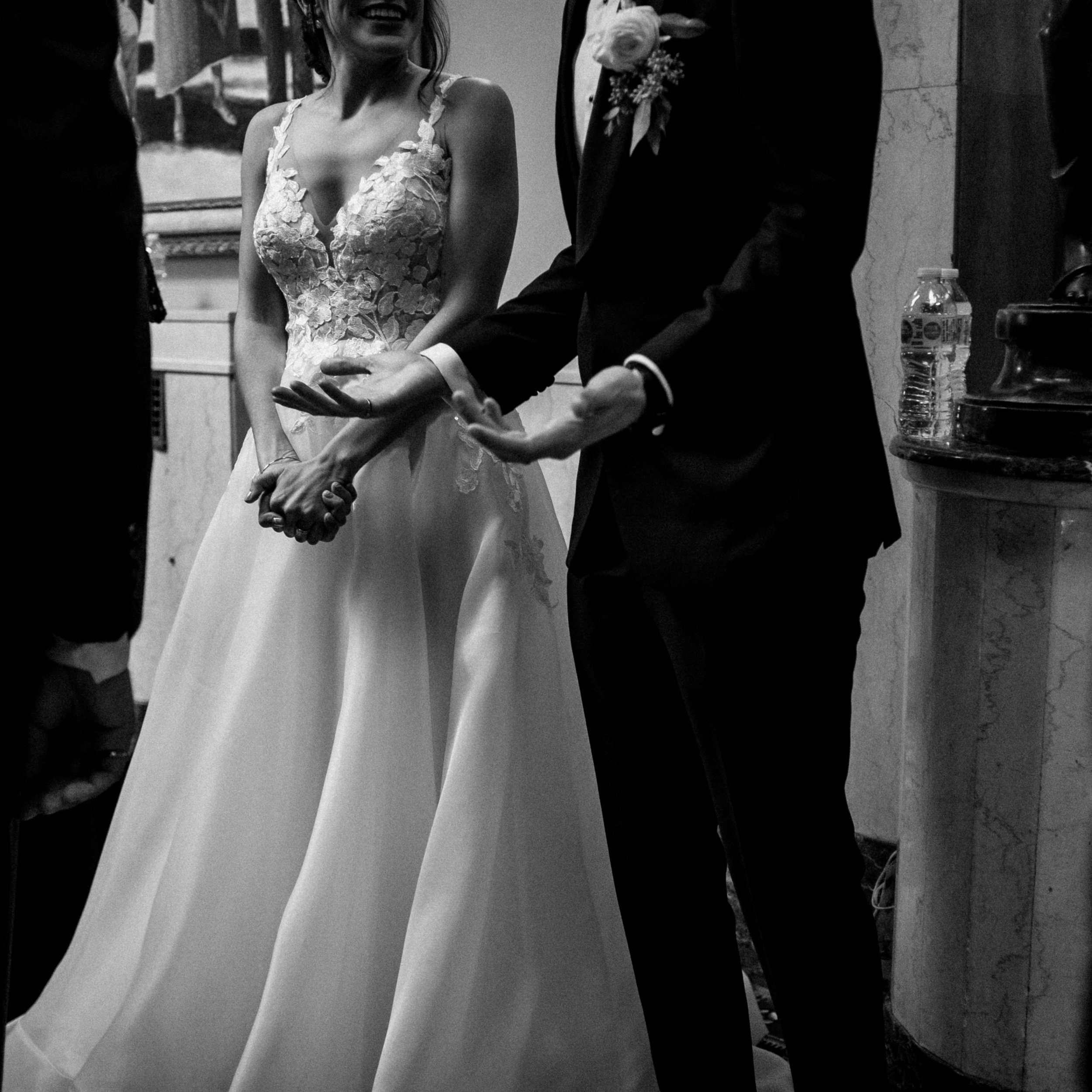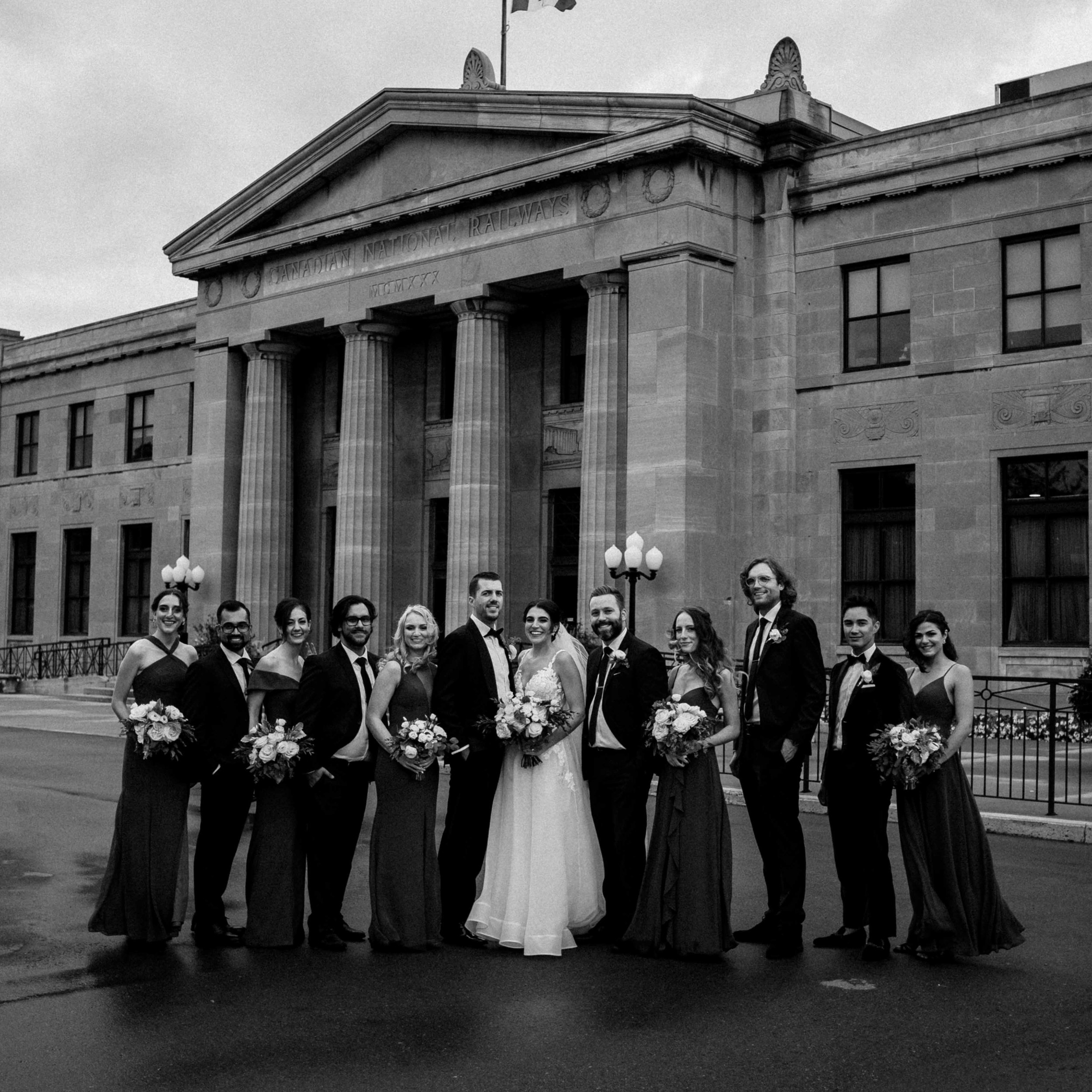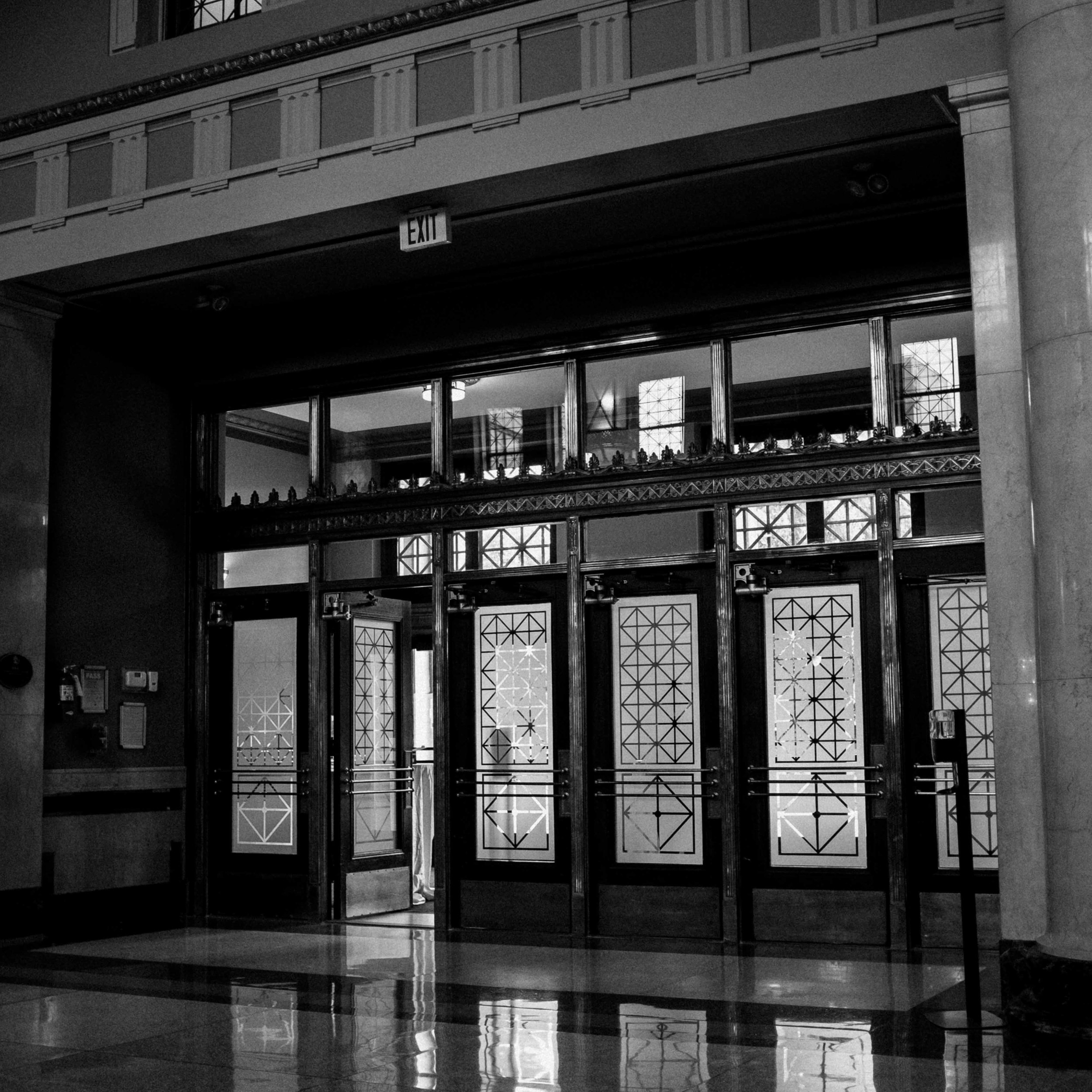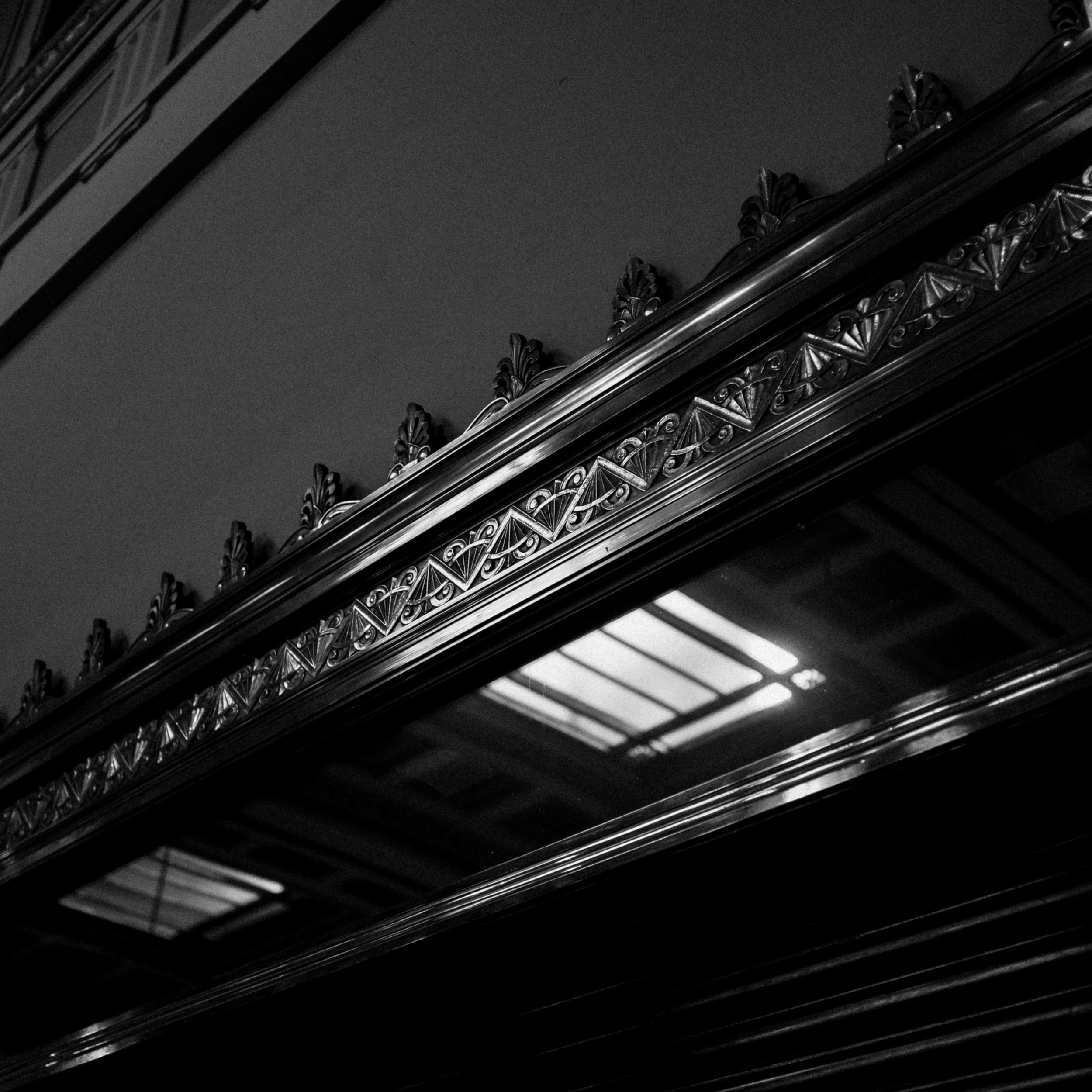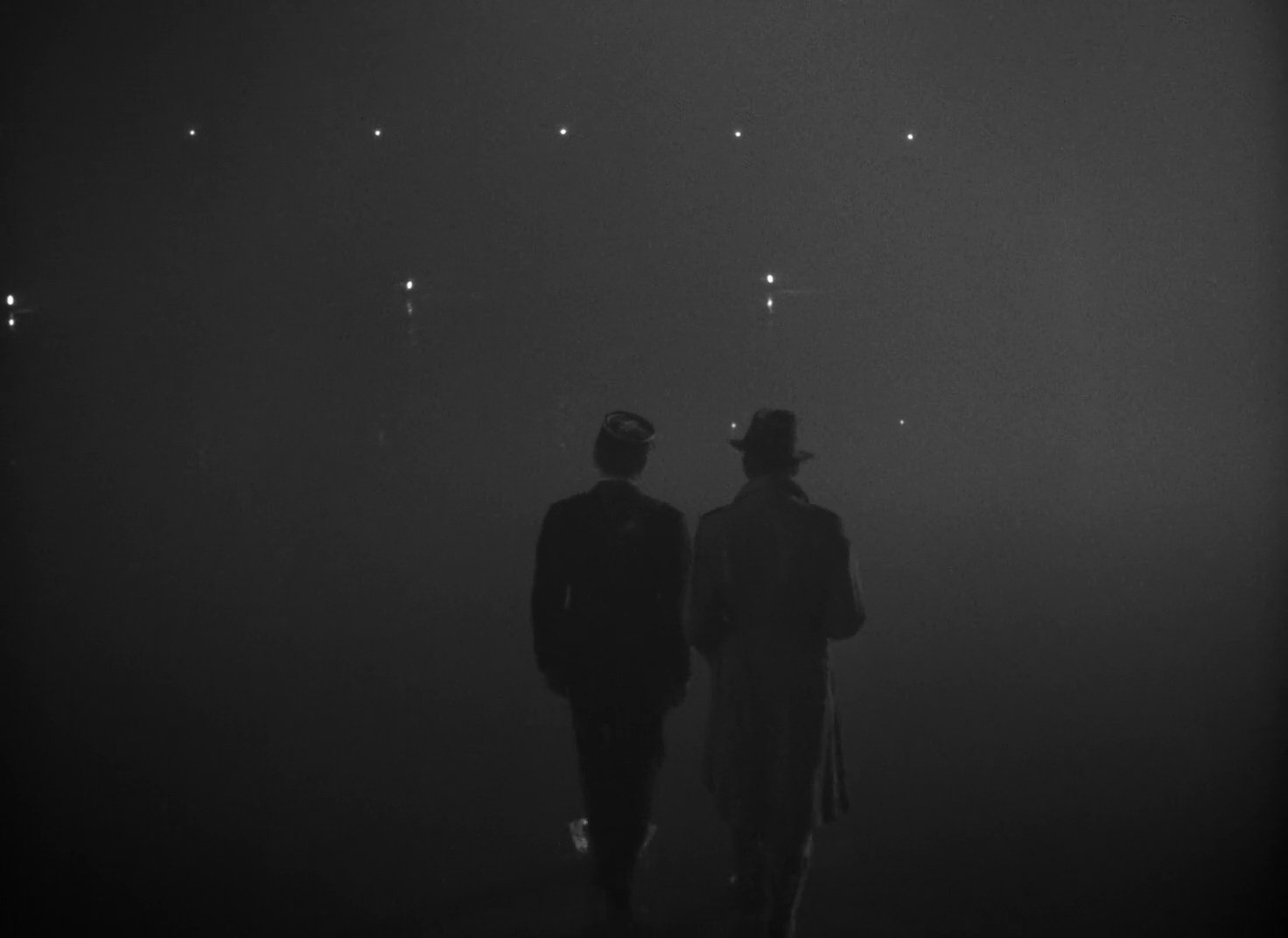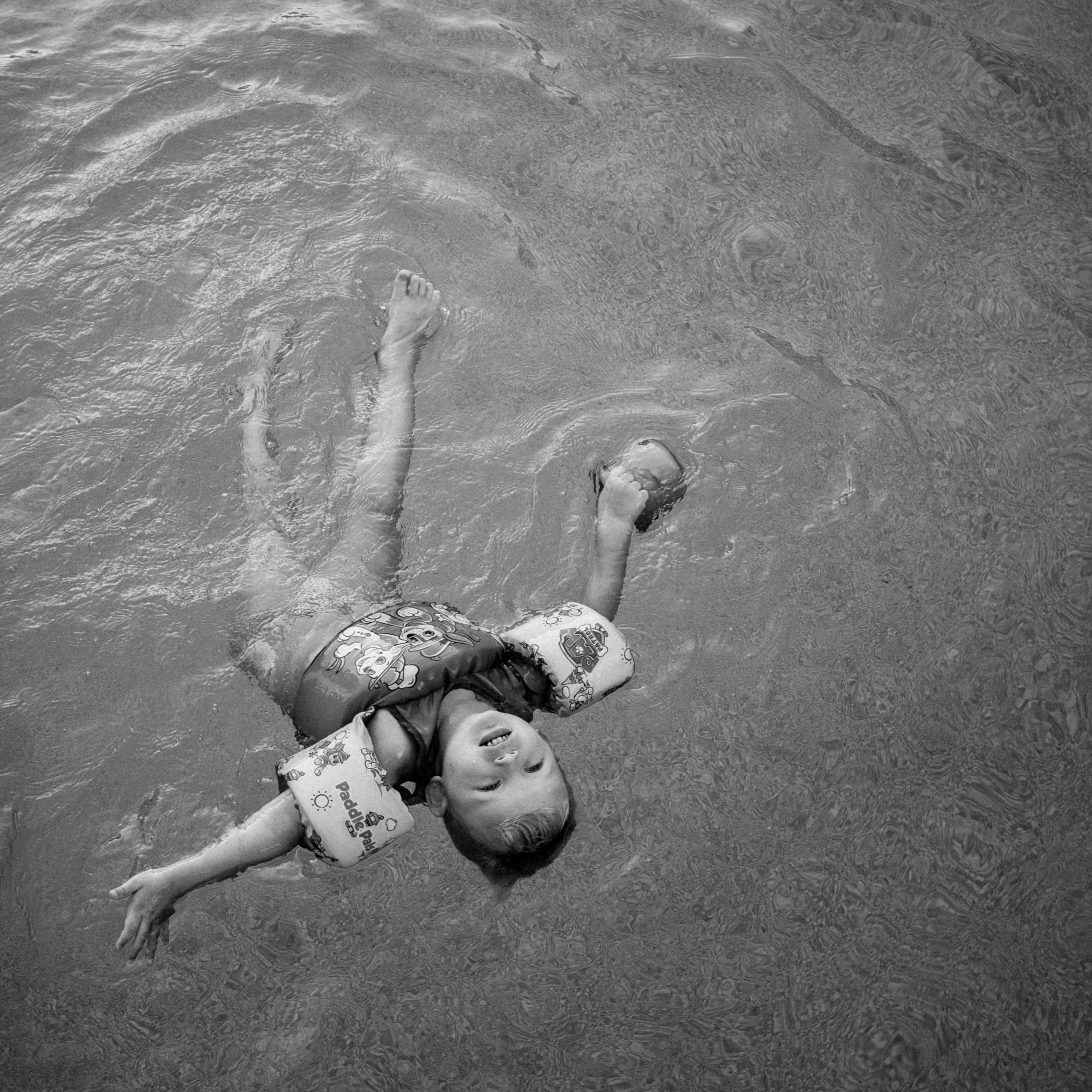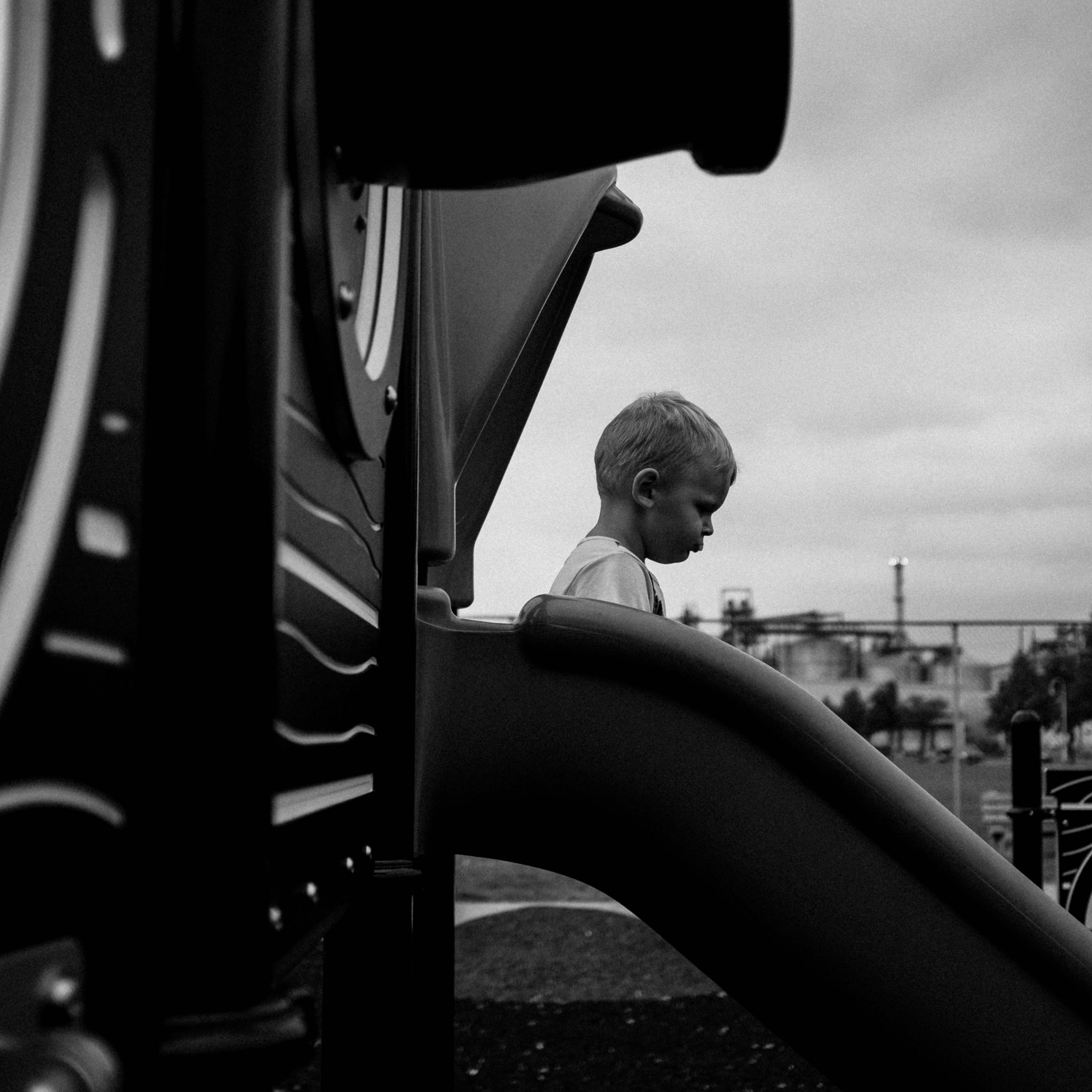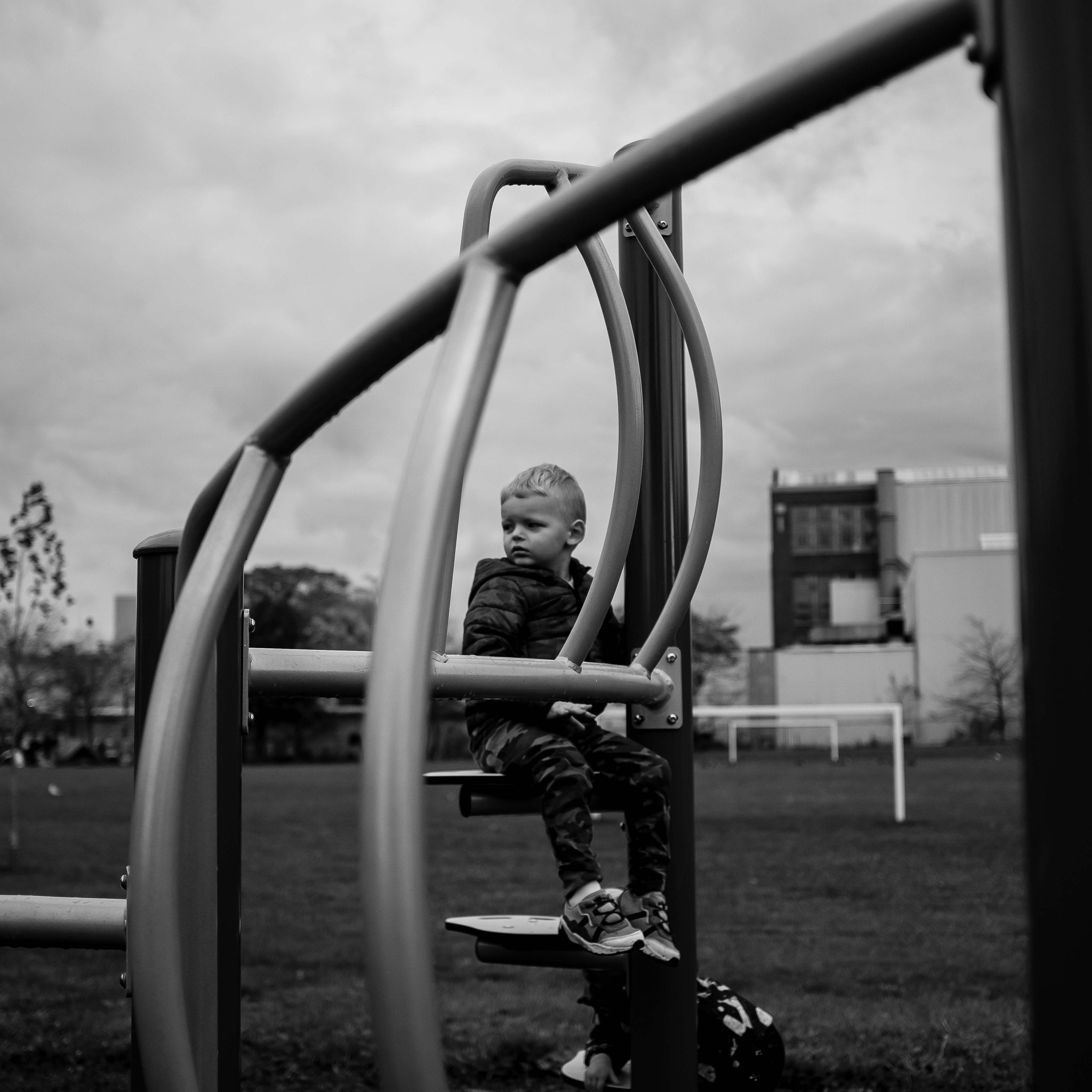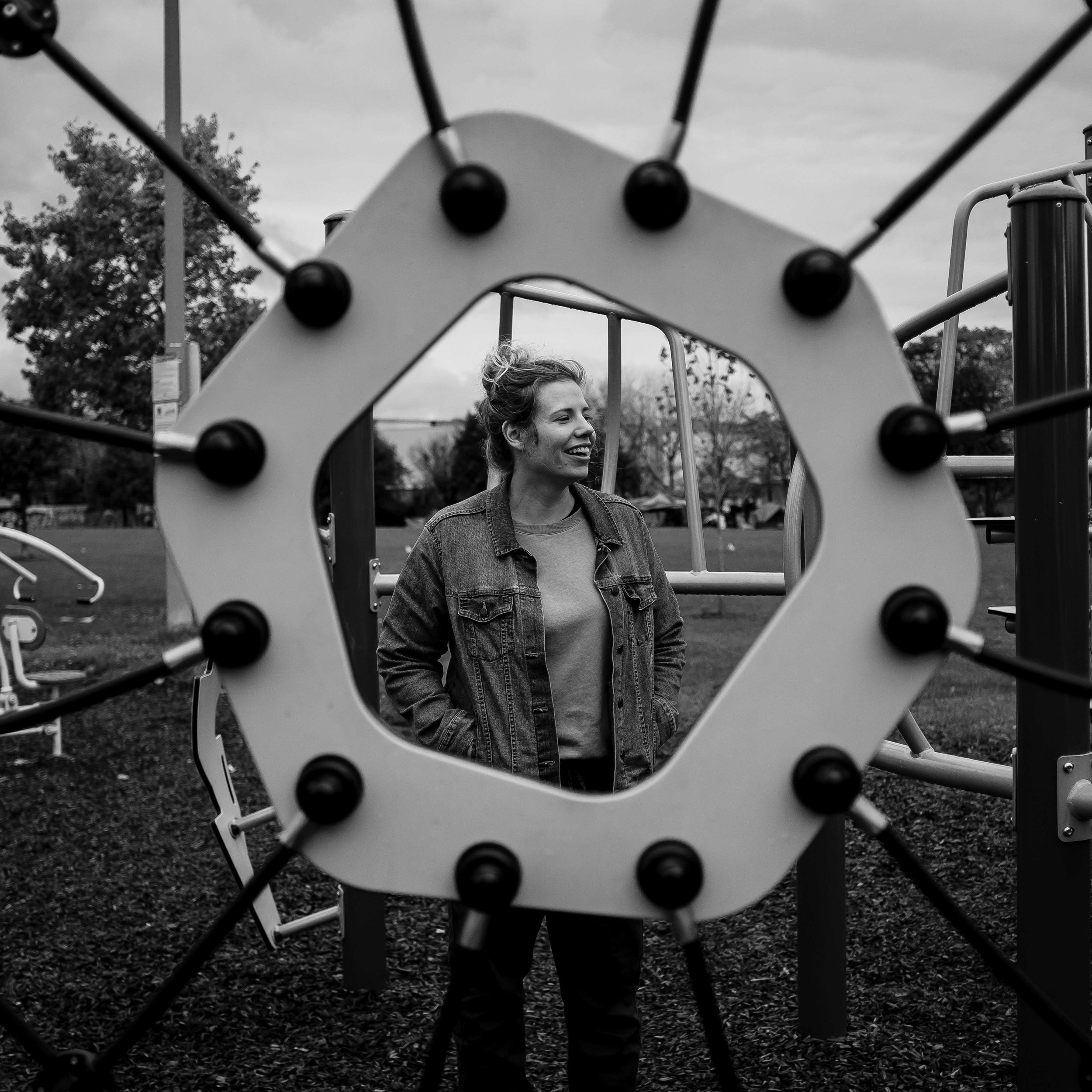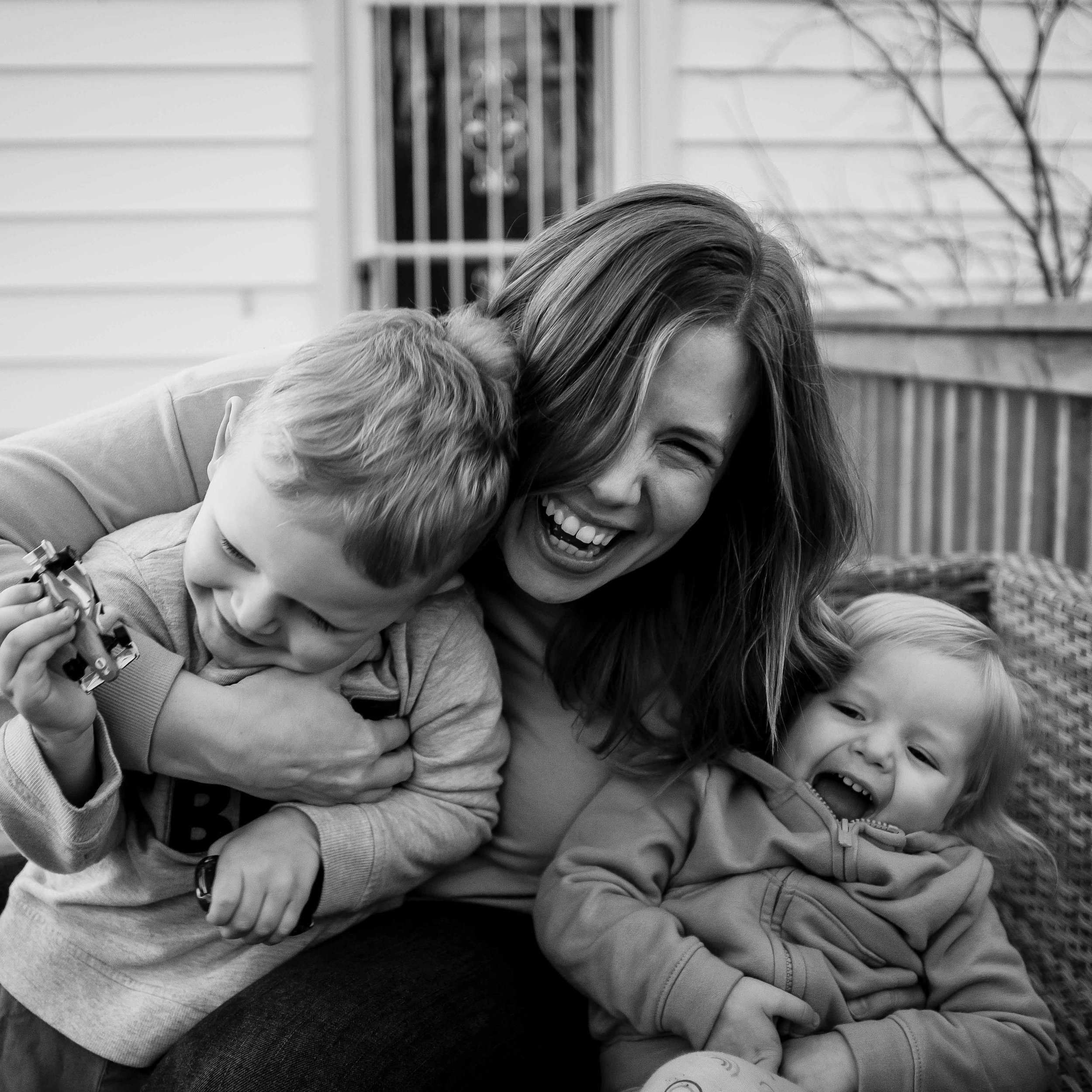The Magic of Black & White Photography
Within my love of photography, black and white has found a unique place in my work that I’m not sure is going away anytime soon.
I thought it would be fun to explore where this all started, why I love the art form so much, who some of my favourite black and white inspirations are, and why you might want to consider black and white photography if you’re looking to spice things up.
As we talk about black and white, it’s important to understand that I’ve not staved off colour photography altogether: heck no. But I’ve fallen down a bit of a rabbit hole and I don’t know where it’s going to lead me.
Rewinding a bit, how did I end up here?
Fuji x100F
Ah, yes. It all started with this little camera here.
For my birthday in 2021, I pooled some gifted money and old giftcards I had lying around and put it all towards a used (“used” - the thing had less than 200 shutter clicks on it) Fuji x100F. I’ve previously owned a Fujix100 series camera (I think we had the T), but I eventually sold it because it didn’t quite fit into our life very well at the time. I was hopping to be able to vlog with it, and L-O-L let me tell you it is not suited for video. Still isn’t. Aside from that, I was still majorly let down with the straight out of camera (SOOC) jpegs for not matching my style.
Anyways; to cut a long story short, I picked up another and told myself I wasn’t going to edit the RAWs. I was wrong. But I started experimenting with shooting—in camera—in black and white with a 1x1 square crop, and I felt myself falling head over heels just a little bit. The frustrations of Fuji’s in-camera presets was starting to fade when I realized how much I loved the look of these black and white photos.
Surely I’m not the first or last person to shoot a square black and white crop though?
Vivian Maier
Definitely not. Vivian Maier was a nanny in Chicago in the 40s through 60s and she produced something like 100,000 photographs; many of which were never developed while she was alive, and the vast majority of which were not seen by anyone until some lucky collectors stumbled upon her storage unit full of old negatives by chance. Now, she’s a widely known photographer (posthumously) and she’s definitely one of my favourite photographers of all time: if not number one.
She shot on an old Rolleiflex TLR camera and created incredible street photos of people of her era. We don’t really know if Vivian knew how talented she was, but she was, and I am still blown away by her work.
You could argue this is where part of my inspiration came from to shoot this way on my Fuji, but I don’t (at least consciously) feel myself trying to emulate her when I shoot. Yes: I am always looking for interesting light and composition, but when I’m documenting my family (which is like 95% of my photography these days), my mind is on them: not another photographer.
Hold On: Why Would Anyone Shoot B&W?
I guess I still haven’t really answered why yet. I don’t know that I can, save through a long and winding blog post about the inspiration and journey I’ve been on. That being said, I hate indecisiveness, so I’ll give you a few of my answers and we’ll be on our way again through this story. More reasons in a bit.
1. It’s a different end product
I mean, it’s not different in the sense that “No one else can shoot in black and white!” but it’s different in the sense of what is most commonly shared these days. Scroll Instagram or TikTok (or Twitter, which is where legit photographers hang out these days) and everything you see is in colour. Of course it is: the focus isn’t on photography in these apps (Instagram has even said so!).
So when you post a photo that’s in black and white, it captures interest for that scrolling them at least just for a moment. The black and white alone ought not to be the only reason they stay, but what’s wrong with using a little visual trick to capture attention?
Let me be clear though: I don’t shoot black and white because I’m hoping to get more attention on social media lol. Not at all. In fact, more people probably dislike black and white photography (I’m guessing) because it feels like a step backwards for them. Why throw away colour when you have it? I get that argument. Black and white film photography was created out of the limitations of the emerging technology: I don’t know that anyone wanted exclusively black and white, but it was the only type of film that could be mass produced during the earliest days of photography.
And maybe for the same reasons people still listen to music on vinyl, I enjoy shooting black and white. No, I didn’t grow up with it. All the photos of me as a baby are not in black and white. But black and white certainly evokes feelings of yesteryear, and I enjoy leaning into that.
More than anything, I shoot black and white because I like it for me. It’s as simple as that. Photography is one of the few areas of my life where I operate entirely, unabashedly selfishly. I don’t care what anyone else thinks (truly): I like it, so I do it.
2. It’s a different way to look at the world
I mean, I’ve already hit on this in the last one, but I think it goes further than just “it’s a cool end product.”
I like black and white photography because it causes you to see the world differently. If you’ve ever walked around with a camera in your hands that was set to shoot solely in black and white (explicitly being clear here: I’m not talking about shooting photos and converting them to black and white in post product. I specifically mean going out with black and white on your mind), you’d know what I’m talking about.
Your brain starts operating differently when you know you can’t depend on colour to save an image. Of course, the best colour photographs use colour to their distinct advantage. It could be qualified as another visual trick in some ways. But it’s been my experience that the vast majority of photographers don’t approach the colours in their frame to the same degree they approach the subject of their photograph. I know I certainly don’t. And black and white sort of lets me hide that. I don’t need to worry about distracting colour elements because they won’t show up in my photo anyways.
Any movie you watch, pay careful attention to colour. It’s everywhere. And Hollywood products spend millions of dollars on every film because they want an insane amount of control on every single scene. A large part of that is set design, lighting, and colour grading; which is where your colour really lives or dies. The reason all of their frames tend to (generally speaking) look pretty good is because there is so much time dedicated to every minute detail in a scene.
Documenting my family doesn’t allow me that kind of meticulous control. I’m here to capture that moment quickly before it’s over. By shooting black and white, I not only get to eliminate a variable I have little control over, I stop thinking about it altogether. This frees up my mind to think in other ways, and I believe it often elevates my final product.
3. It’s easier to end up with an image I love
I just touched on this: Hollywood movies spend weeks or months editing colours in their final film. I don’t have the time for that (or don’t care to make the time), so making post-production on my work as easy as possible means that I actually get to enjoy my work in a relatively reasonable timeframe (one of the reasons I prefer photography to videography).
When I edit an entire set of photos I took in black and white, all I really need to do is adjust exposure, compensation a little bit (maybe), and fix a crooked horizon. Then I’m set. I can live with grain a lot easier in black and white because the multi-colour, purple-cast grain of a digital colour image is horrific. I can also live with blurriness or missed focus because it feels like it’s just part of the photo: not like I lacked the skill to have captured a sharp photo. I don’t know.
As I said: black and white has a way of hiding the sins of bad photography. Some of the things I do that are bad aren’t because of carelessness or a lack of knowledge: they’re because I care more about other aspects of my photography (like actually capturing the moment before it’s over) more than I care about those things. Black and white allows me to de-emphasize the things I dislike.
The Distraction of Colour
This might be an unpopular opinion (I’m cool with that), but I think that colour has a way of distracting us from other elements in a photograph in a way that black and white doesn’t allow the photographer. (Some people might argue the opposite is true: some days I might agree.)
Let me take this opportunity to say: I love colour. Step into my house and you’ll know that very quickly! But in a photograph, I don’t like when bold colours make up for what’s otherwise a boring photograph. By removing colour and creating a black and white photo, you are only focused on what the light is doing: not the colour.
Now—absolutely—I use the absence of colour in my black and white work as a benefit to simplify my composition. I don’t need to worry about distracting fluorescent colours because they don’t show up. I only need to worry about their luminance, and how it interacts with the subject of my photo.
The best photographers (and cinematographers) in the world use colour with the utmost intentionality in order to enhance their image. This is fantastic, and one of many reasons high-budget movies look so otherworldly. This isn’t a possibility for the average person documenting their life: especially when the moment trumps the rules. Eliminating distracting colour allows me to work quicker and get a photo I’m happier with when I’m in less control of the variables (light, colour).
Greg Williams
Shouting out another photography inspiration of mine.
I don’t remember how I stumbled onto Greg Williams, but he’s a talented dude that is primarily known for his very candid photos of celebrities. The vast majority of what Williams shoots is in black and white, and that (no doubt) has inspired me to continue leaning into my love of black and white photography.
Williams hasn’t had as deep an impact on me as Vivian Maier has, but nonetheless he’s a modern, well-known photographer in this day and age that shoots primarily in black and white.
I have criticisms of Williams’ work, but little of that has to do with it being in black and white. It doesn’t feel like just a schtick for him: it feels very genuinely something he passionately shoots.
Wedding “Fun” Camera
Wrapping up my last full-time year as a wedding photographer in 2021, I took an opportunity to experiment with one of my weddings that I had a feeling would be well-suited to what I had in mind.
While I traditionally wear 2 cameras on my person throughout a wedding day (one with a 50mm lens and the other with a 35mm or 24mm), this wedding day I wore a third camera (the x100F) around my neck throughout the entire day. It was set in my favourite way of shooting it (black and white, square) and whenever I’d see an opportunity throughout the wedding day, I’d snap a photo or two or three in black and white.
I was intentionally shooting this camera in a very different way: I was looking for interesting, intimate compositions or interesting pockets of light. I couldn’t fall back on bold colours to make these photos interesting. By having less to work with in some ways, I really had more.
I don’t want to venture and say, “These are some of the best photos I’ve ever taken at a wedding.” That wouldn’t be fair. They’re certainly some of the most different, and the act of taking them was some of the most fun I’ve ever had at a wedding, but I couldn’t begin to guess what some of my personal favourite or “best” photos from a wedding are.
A handful of these moments I likely wouldn’t have bothered capturing at all if it weren’t for the black and white square format.
As you can see in the short curated gallery above, I had focused on different details and compositions than I would normally take with my coloured cameras and include in the final wedding album to the client. I’m not here to bellyache: it makes complete sense to me why couples would expect certain photos back in their final album (no matter how repetitive or boring it might’ve felt to me to take them). But the Fuji camera on that wedding day was what I referred to as my “Fun camera” for the day. It was only the photos I selfishly wanted to take.
Now, would I be a better photographer (and find more success) if I more often took liberties in capturing photos on a wedding day the way that I wanted to capture them, not necessarily how I believed the couple wanted them captured? Maybe. And that’s a stone I’m fine leaving unturned.
As I’ve written about many, many times: the chemistry of your passion changes when your life depends on its success. The Fun camera was just my tiny way to inject a bit more selfishness into capturing a client’s event than I normally get. If it became the norm, I don’t think it would stay quite as special.
Which is all to say: I think a huge part of the reason the Fun camera felt so successful to me was because it had no client expectations. The black and white, square format were just expressions of my selfishness: they were not required for success. Nonetheless, if you ask me, I don’t believe the black and white and success of the photos are mutually exclusive.
Casablanca
I’d be remiss not to quickly mention one of my top 3 movies of all time: 1942’s Casablanca. One day I’ll write a longer blog post entirely about why I love this movie, but until then, you get a short snippet.
I don’t love this movie exclusively because it’s in black and white or a 4:3 aspect ratio. Those add to my love for it, but it’s far from the foundation.
I’ve rewatched this movie probably a dozen times in the past two years, and anticipate I’ll watch it another dozen times in the future. It makes me feel relaxed when I watch it. There’s so much I can and will say, but the cinematography definitely has some incredible moments.
Below are just a few frames from some of my favourite moments. Casablanca is hardly a movie with the most interesting cinematography of its era (1944’s To Have & Have Not and 1947’s Dark Passage might arguably be more creative). Are these revolutionary? Certainly not by 2022’s standards. Even then, I’m not sure if they shocked audiences.
You might even think a few of these are stereotypical, but you need to realize that a movie like Casablanca invented the stereotype.
Clearly most of my favourite shots are portraits.
I could share more, but these are just enough to whet your appetite. Go watch the movie if you’re vaguely interested. It’s largely considered one of the best movies of all time for a number of good reasons.
Reasons You Should Shoot Black & White
Bravo to you if you’ve hung on with me this long. Here are the big reasons I think you should consider shooting black and white photography (aside from the 3 I mentioned earlier in this post):
1. Nostalgia without cheesiness
As I’ve already mentioned: black and white film emerged as a technical limitation, not an artistic choice. It shaped an entire era of history. We see something black and white and our mind’s immediate subconscious reaction is “old”. I enjoy leaning into this.
Since the advent of digital photo editing, intense colour editing has been the norm for quite some time. Phases of it are very evident if you follow photography even passively.
Black and white is the old school cool that will never go out of style, as far as I’m concerned. It affects your colours (er, removes them) but it doesn’t even risk feeling as era-heavy as something like sepia (barf).
As long as it’s not a crutch for your work, I think there’s nothing wrong with harkening back to the days of old in your work. We stand on the shoulders of giants, after all. Every single one of us. Why not pay direct homage to it?
2. Might elevate a good photo (or make worse a bad photo)
Don’t miss me on this: black and white cannot make a bad photo good, but I do think it can make a good photo great. I also think it can make a bad photo worse.
In all honesty: you could probably argue that my theory here is inconsistent or altogether untrue. I might even agree with you. But for me, I’ve edited entire galleries in colour, and then done a black and white version, and found there were certain photos I liked in colour that I loved in black and white.
If your photo sucks, black and white probably isn’t going to help fix it much. It might make it even worse. Again: black and white work shouldn’t be used as a means of making up for inability. At least not every single time.
3. You don’t care about colour that much
I’ve been shooting black and white very regularly for almost a year now. I could count on one hand the number of times I looked back on a gallery I’d shot and wished I’d edited it in colour.
I haven’t missed colour that much; if at all.
I also recognize that, for many of the galleries I’ve shot recently, I wouldn’t have shot near as many of them if I knew I was going to have a mountain of editing in front of me. So by removing some of the barriers between taking the photo and having the completed photo in my hand, I’ve found myself more willing (and interested) in picking up the camera in the first place.
Are there some photographs where colour is absolutely essential to its success? Of course! Again: I don’t hate colour. I have just found that, for me, it’s nowhere near as important as I used to believe.
4. Faster to edit
I’ve already hit on this all the way throughout this piece but it deserves its own argument: editing black and white photographs are so, so much easier than colour.
Colour editing sometimes requires adjusting: white balance, tint, vibrance, saturation, hue/saturation/luminance, colour noise reduction. Literally none of those need to be adjusted in black and white photography.
For me, colour consistency is one of the things I spend the most time doing when editing photos. I want good, clean, natural skin tones, and the rest of an image that feels punchy and full of life. To balance all of that—consistently—is difficult and requires a lot of micro adjustments to get perfect. Even after all my years of shooting and editing, it’s still the thing I struggle with the most.
Black and white requires none of it. I can do those edits if I need to, but for personal work, it is dang nice to touch exposure, contrast, and move on with my life.
5. Consistency
Maybe this varies from one guy to the next, but I get a huge thrill out of being consistent in my work. I don’t like work that feels super dated or of a certain era. It’s why my editing style has changed very little over the years.
Black and white photography is super, super easy to keep consistent. You find how deep you like your blacks, how bright you like your whites, and you simply try to get something consistent in each image.
Photos I took a year ago might feel like I took them yesterday. I find that this continues leaning into the timelessness of black and white photography even more than just standard colour.
If you’re into wild edits and loving your work today but cringing at it tomorrow, this won’t matter to you. Maybe you don’t cringe: I don’t know. But I certainly have, so anytime I find myself getting too off track in my editing, I try to pull myself back to the straight and narrow, because it’s the only recipe I’ve found that pleases future-me as much as it does present-me.
6. It’s fun
In all honesty, these could be the 2 words that summarize this whole article. Black and white is something different than I’ve been doing for the vast majority of my photographic life, but it also feels like exactly what I’ve been doing all along. I don’t know if that makes sense to anyone other than me.
Black and white keeps things interesting. Because I’m viewing the world differently than I do with my own two eyes, there’s still a small element of surprise in not knowing how the camera’s going to interpret certain scenes in black and white. Maybe this will become more obvious the more I do it, but I still don’t see it taking the fun out of shooting black and white.
Maybe this is one monstrous inspiration kick I’m on and, one day, I’ll come down from it and regret the year of my life I shot almost entirely black and white. It’s possible, but I’m having a hard time imagining the circumstance.
If we started picking up a camera because it was fun, it would be silly to do anything that makes it feel like work. Maybe that’s part of the reason I quit. I have been thrilled making photography just a hobby again. I have felt more creative, more inspired, more deserving of the title “photographer” than I think I have my entire life.
Tips for Pulling it Off
If I’ve managed to talk you into shooting black and white, here are my tips on how to do it in achieving some of the best results.
1. Do it in-camera
Especially if you’re still shooting in RAW, set your jpeg preview to be in black and white. This is especially fun if you have a mirrorless camera that lets you see through the viewfinder in black and white (something not possible with SLRs).
This is one of the most important tips for pulling it off, so don’t ignore it.
By shooting in black and white, you’re seeing the world differently than your eyes do. That’s good: we want to take advantage of that. It 100% will shape the way you approach the shots you want to take. It will affect your composition, exposure, subject.
In my opinion, this is the proper way to do black and white. If you just shoot an entire gallery in colour and convert it in post, you’re sort of missing the point.
We don’t want to affect the end product in a superficial way: we want to impact the entire process of shooting.
Even your iPhone can shoot in black and white mode. Take advantage of it.
2. Shoot in all kinds of light
For much of my photographic life, I’ve looked for overcast skies and open shade when it’s sunny. There’s probably good reason for this, but the implications this can have on your colours and final photograph are often glossed over in photography tutorials by professionals.
When you’re shooting in black and white, it’s sort of less of a big deal if you’ve got clipped whites (bright parts of your image that are so overexposed that no detail information can be seen in them). Especially if it’s just acting as a rim light to your subject.
This is one of the areas, in my opinion, shooting black and white will hide some sins of your shooting. You will get more consistency and worry less about colour because every image contains bright and dark spots. Now the balance almost matters less than it did before.
Black and white is also a lifesaver in mixed-lighting conditions (typically a photographer’s nightmare). Window light with incandescent light is obnoxious on a good day, and will outright ruin your photo on a bad day. Black and white allows you to keep the quality of light without worry about what colours it’s casting or what source is hosting it.
It is easier to shoot in all kinds of light with black and white. Take advantage of it: it’s something colour photography doesn’t really have in the same way (or without copious amounts of colour correction in post).
3. Underexpose a little / crush your blacks
For a long time, my general philosophy in photography was to eliminate as many shadows as I could from my image. I was also hugely inspired by bright and airy photographers for many years. It felt like a safety net: you don’t need to have great light if you just have a lot of light. This can be effective at times, but there are too many situations where you cannot have a lot of light, and you need to work with what you have.
Black and white photography makes it all the more fun to underexpose your images a little and allow details in the shadows to melt together (“crushing your blacks”). If you edit your images with a really flat profile, my personal opinion is that your image looks really washed out and boring.
Because black and white is sort of intended to emphasize interesting light, underexposing tends to draw even more attention to what the light is doing. I wish someone had told me (years and years ago): it’s ok to have shadows in your images; especially if you’re being conscious of how you’re doing it.
In black and white work, don’t shy away. Lean into it.
4. Shoot entire galleries in it
This might be obvious if you’re following tip #1, but shoot entire sessions in black and white. If you’re half-committing with some colour mixed in, you’re hindering your ability to fall in love with black and white. Remember how I said, “I don’t miss colour”? A huge part of that is because I have literally no way of remembering it.
Including colour images in your gallery is going to make your black and white feel lacking. You’ve set the baseline in a different place when you have colour images sprinkled in.
Flip the script and make black and white your baseline. Especially in the beginning, don’t hesitate. Jump in feet first to black and white. You might not get it on the first try.
5. Collect your favourite images
I store all my images online so that I can access them at any time (also technically have a small library of physical hard drives with all my images also), and I’ve been putting some of the highlights of every gallery I have into that folder. It allows me to search through some of the best of the best moments in a quick glance over the course of time.
Is this imperative to loving black and white photography? Not at all. But I find myself feeling more inspired and excited to shoot black and white every time I glance through that album (probably once a month).
This is a great practice to get into regardless of what colour photography you shoot. Pool your images together as you go along and some of those lesser-moments won’t get lost in the midst of all your shoots. Separate it however you please.
6. Live and breathe it
I’ll reiterate: if you’re going to take a chance on black and white, make the commitment to really commit for a period of time. Don’t be shy about it or I’d guarantee it isn’t going to work.
Look up the work of other black and white photographers you love (believe it or not, Twitter has become my favourite social platform for discovering new photographers these days). Bookmark their work. Buy photo books. Immerse yourself.
If you’re half-hearted on black and white, I think you’re going to miss a lot of what makes it so special. I can spend some 5,000 words trying to convince you why it’s going to change your life, but only you can decide that for yourself.
Leica Q2 Monochrom
Remember how I said all of this started with the Fuji x100F?
There’s a considerably more expensive comparable camera that I often dream about. I don’t think I could ever pull the trigger, but dang if I don’t think about it.
The Leica Q2 Monochrom is a camera that can only shoot in black and white. That’s especially mind boggling when you look up the price ($8000 CAD new). It’s also only got 1 lens (a 28mm) that you can’t change, and it doesn’t zoom.
This camera, more than any other, would necessitate the commitment to shoot only in black and white. It is one of Greg Williams’ primary workhorses. I think it would be fun.
This is a super specialty camera, and I might be one of the few photographers out there who would love and appreciate it for the unique tool it is. That being said, I’m having a hard time swallowing the cost, so I haven’t pulled the trigger.
Yet.
(?)

